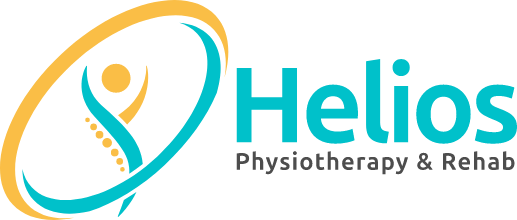 Headaches can have a significant impact on various aspects of life, affecting individuals physically, emotionally, and socially. Headaches can cause intense pain and discomfort, making it difficult to carry out daily activities or perform at work or school. They can limit mobility, decrease energy levels, and contribute to a sense of fatigue or exhaustion.
Headaches can have a significant impact on various aspects of life, affecting individuals physically, emotionally, and socially. Headaches can cause intense pain and discomfort, making it difficult to carry out daily activities or perform at work or school. They can limit mobility, decrease energy levels, and contribute to a sense of fatigue or exhaustion.
Chronic or severe headaches can disrupt work productivity and performance. They may lead to missed workdays, decreased concentration, difficulty focusing, and reduced efficiency. Headaches can also limit career opportunities and advancement potential. Headaches can significantly affect an individual’s overall quality of life. The persistent pain, along with associated symptoms like nausea, sensitivity to light or sound, and cognitive difficulties, can interfere with enjoying leisure activities, social engagements, hobbies, and personal relationships.
It’s crucial for individuals experiencing the impact of headaches on their life to seek appropriate care and explore effective treatment options. Consulting with our healthcare professionals can help in managing the impact of headaches and improving overall well-being.
The three most common categories of headaches are:
- Tension Headaches: includes headaches that result from tension, Cervical spine Impairments, or Temporomandibular dysfunction.
- Vascular (such as migraine or cluster),
- Inflammatory (tumors or disease of eye, nose, and throat)
Our Certified Therapists can assess the headache to identify the cause of the Headaches whether it is Tension, Vascular, or Inflammatory.
Tension headaches are extremely common. According to studies, tension headaches affect approximately 30-80% of the general population at some point in their lives. There is associated tension in the Facial Muscles, Jaw Muscles, Cervical muscles and Thoracic Muscles, Shoulder Muscles which may radiate across the top, side, or back of the scalp.
What are the CAUSES of Tension Headache?
There are many factors that may cause a Tension headache.
- Cervical Spine problem- With cervical headaches, the joints and ligaments of the upper cervical spine are often inflamed or in dysfunction. This can cause inflammation of nerves which provide sensation to the face, forehead, orbit, sinuses, and TMJ region
- TMJ dysfunction/ Jaw problem
- Faulty or Sustained postures- Sustained muscle contraction from faulty posture or emotional tension leading to reduced blood flow.
- Impaired muscle performance- impaired muscle control and endurance in cervical muscles and suboccipital muscles.
- Faulty thoracic joint mobility or Impaired upper thoracic mobility
- Impaired shoulder and scapular posture with related muscle imbalances.
- Impaired lumbar posture with related muscle imbalances.
- Impaired neural tissue from pressure or inflammation e.g., Greater occipital nerve irritation or impingement
Whatever the cause, there usually is a cycle of pain, muscle contraction, decreased circulation, and more pain, which leads to decreased function and potential soft tissue and joint impairments.
SIGNS & SYMPTOMS
Here are the Symptoms of Cervical Tension Headaches
- One side headache or Both side headaches
- Pain in the neck or suboccipital region that spreads into the head
- Intensity can fluctuate between mild, moderate, or severe.
- Precipitated by sustained neck postures or movements.
- Precipitated by stress.
- Related to trauma, Degenerative Joint Disease, a sedentary lifestyle, or postural stresses.
- More prevalent in females but no familial tendency
Pain or altered sensation in the face or TMJ region.
HOW DO WE ASSESS AND TREAT THE HEADACHES?
Therapist will Examine the flexibility and strength of the muscles in the Jaw, cervical, upper thoracic, shoulder girdle, and lumbar spine, and design an exercise program to regain a balance in flexibility and neuromuscular control in conjunction with posture correction and training as described in the previous section.
Management is directed toward reversing physical impairments, including posture correction, stress management, and prevention of future episodes. Interventions that have been reported to decrease the intensity and incidence of cervical headaches include the following.
- Therapies like Ultrasound, IFT, Acupuncture, Laser, Shockwave, Cupping, Gua Sha, Scrapping tool can be helpful in pain relief.
- Soft tissue Release and Manual Therapy techniques like Active Release Technique, Muscle Release Technique, Manual Therapy, and muscle-setting exercises are used to break into the cycle of pain and muscle tension.
- Mobility and flexibility Exercises Increase joint mobility in the cervical spine and flexibility in the suboccipital muscles to relieve tension in that region as well as to activate and train the deep cervical flexors for control of capital flexion and cervical retraction. Control and support from the deep segmental muscles is the foundation of management.
- Cervical stabilization exercises Utilizes cervical stabilization exercises as described in detail in, emphasizing tonic holding of the deep segmental muscles in isolation from the global muscles.
- Scapular stabilization and posture helps to Train the lower trapezius, rhomboids, and serratus anterior muscles in tonic holding postures to improve control of scapulothoracic posture.
- Stress Management: If the person is in tension-producing situations, relaxation techniques, Downregulating Nervous System and proper spinal mechanics are taught.
- Prevention: Underlying the prevention of future episodes of cervical headaches is the education of the patient to correct postural stresses, maintain a healthy balance in the length and strength of the postural muscles, and adapt the home, work, or recreational environment to minimize sustained or repetitive faulty postural alignment.
- A study was conducted on 200 individuals with cervicogenic headache. They looked at the effectiveness of therapy and found that it reduced headache frequency and intensity and reduced neck pain compared to that in the control group, and that the effects were maintained at the 12-month follow-up. (Jull and associates)Unlock a pain-free life with our targeted headache treatments. Our team of experts understands the complexities of headaches and will work with you to identify the underlying causes and develop a personalized plan for relief. Benefits of our Headache Services:✅ Individualized assessment and treatment plans✅ Reduction in frequency and intensity of headaches
✅ Improved quality of life and overall well-being
✅ Expert guidance and support from our experienced team
The pain and its impact on daily life can lead to feelings of frustration, irritability, anxiety, and depression. The constant worry about when the next headache will strike can contribute to heightened stress levels and a diminished sense of well-being. Headaches can disrupt social interactions and relationships. Individuals may need to cancel plans or avoid social gatherings due to headache episodes. This can lead to feelings of isolation, loneliness, and a sense of missing out on important events or connections. The financial impact of headaches can arise from medical expenses, including consultations, diagnostic tests, medications, and treatments. Additionally, missed workdays or reduced productivity can result in income loss, which can further contribute to financial strain. Headaches can impact the ability to perform routine tasks and responsibilities. Simple activities like household chores, childcare, driving, or even basic self-care can become challenging during headache episodes.
Our skilled professionals are here to help you break free from the grip of pain and regain control of your life. Experience the freedom of a headache-free life! Contact us today to book your consultation and take the first step towards lasting relief. Call now to schedule your appointment or to learn more about our specialized headache services! #HeadacheRelief #PainManagement #Wellness #QualityOfLife #FeelBetter #BookNow #HeliosPhysiotherapy #FollowUs #Instagram #Facebook
